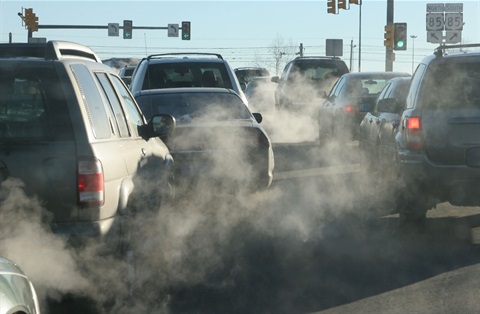Why Focusing on One Source of Pollution Misses the Bigger Picture
Published on September 30, 2024

The Regional Air Quality Council (RAQC ) recently released some informational highlights from the 2024 Ozone Season data with a call for “additional control strategies and immediate action to meet compliance deadlines and improve public health.” While the media release itself highlights many sources of ozone pollution and provides an overview of several potential control strategies, a few media outlets and community commentary have limited their focus to the impacts of a single source in the pursuit of a simple answer.
It’s important to note that ozone exceedances happen for many reasons, and attributing them to any single source, such as oil and gas, overlooks the complexity of the issue. Overly focusing on a single data point, can give a skewed perspective on how to scientifically approach the problem of air quality. It is not effective to push a one-size-fits all solution because sources contributing to ozone vary across the Northern Front Range and so must the control strategies.
The bigger picture: It’s not just about oil and gas
It may seem like an easy answer to suggest that oil and gas activity is largely responsible for spiking ozone levels, but again, the data tells a different story. Source apportionment modeling from the State Implementation Plan shows that oil and gas contributes to ozone levels, but not as much as you might think. For example, in Fort Collins, oil and gas is responsible for about 24% of ozone, but in other areas, like Rocky Flats and Chatfield, the numbers are much lower—10% and 7%, respectively.
Other sources, like light-duty vehicles, lawn and garden equipment, and industrial sources, play a much bigger role in some areas. This means that focusing on oil and gas as a “one-size-fits-all” answer won’t solve the ozone problem. Instead, we need a more comprehensive approach that targets a wide range of pollution sources.
One area the RAQC media release specifically touched on was oil and gas emissions, suggesting that more aggressive regulations of activities like blowdown events could help reduce ozone. Blowdown events, where wellheads are cleared of methane and other pollutants, are an easy target for criticism. However, the actual data from the RAQC tells a different story.
A presentation from the RAQC’s ozone modeling forum showed that additional oil and gas regulations would result in less than a 0.1 ppb reduction in ozone—hardly enough to make a meaningful difference when we need to see a reduction of 4 ppb to meet the EPA’s 2015 standard. In this case, proposing more regulations without first assessing whether the existing rules are working seems premature.
I have shared my perspective several times at technical working group meetings with the RAQC that they should not be proposing any new oil and gas regulations until the next source apportionment modeling for the State Implementation Plan is complete to ensure we have a current understanding of the sources contributing to our ozone problem. Additionally, there needs to be an assessment of whether the previously implemented oil and gas regulations are helping to reduce ozone at our highest violating monitors.
Solving the climate puzzle means looking at all the pieces.
Ultimately, the RAQC’s press release does strike the right note by emphasizing the need for an “all of the above” approach. To meet EPA standards by the 2027 deadline, we need to address pollution from all sectors—industrial sources, vehicles, and yes, even our lawnmowers. About half of ozone precursors come from industrial activities, while the other half comes from the collective actions of individuals. This means that solving the ozone problem will require both large-scale regulations and small changes in our daily lives.
Looking for a single answer and focusing the conversation too narrowly on one source, like oil and gas, won’t get us to cleaner air. Instead, we need a science-based, data-driven approach that recognizes the complexity of the problem and targets all major contributors. Only then can we hope to breathe a little easier.